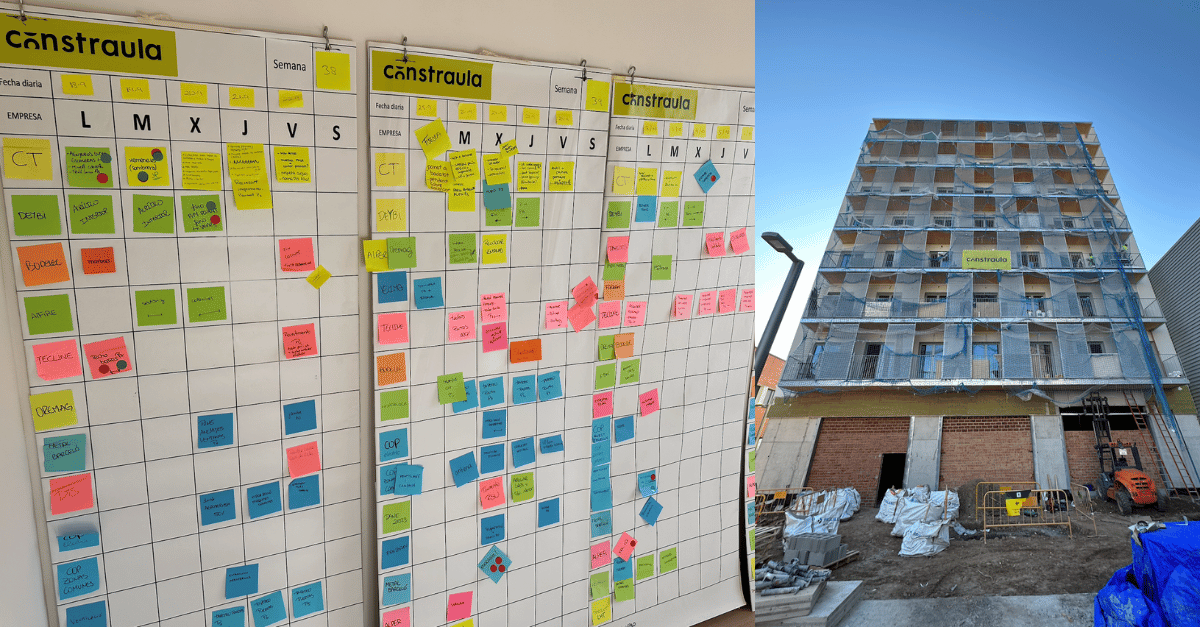
How to turn HR into a catalyst for lean thinking
FEATURE – In most organizations on a lean journey, the people management function is not very involved. So, how should HR change, if it is to effectively support a lean transformation?
Words: Flávio Picchi, Vice-President, and Marcelo Amoroso, Project Manager, Lean Institute Brasil
Achieving a lean transformation hinges on our ability to transform people. Change requires creating different and more effective forms of interaction between teams and leaders, as well as the development of the right behaviors and capabilities in everyone, from front-line staff to top management.
In most companies, the first steps towards a lean transformation are generally made in the “core processes” – that is, those that directly impact the delivery of services or the manufacture of products. In a way, this makes perfect sense, because lean’s primary focus is on creating more value for customers (and that is eventually represented by the service they receive or the product they buy).
The first managers, therefore, who typically experience, strive to understand and then spread the lean philosophy across the company are those working in operations.
They, however, quickly realize that the application of lean tools and the process changes that are beginning to take place actually depend on the changes they can affect in the way they manage people, in the way they shape the corporate culture, and in their approach to leadership. And yet, we can identify a huge gap in most organizations: the function devoted to “people management” – HR – often lags behind when it comes to lean transformations.
In many instances, the HR department assumes a formal, but subsidiary role in delivering change: it will, for example, organize training without actively participating in supporting the profound organizational change that lean brings with it.
So, what should the role of HR be in a company that strives to think lean and transform itself? What should human resources leaders and professionals change about the way they think and work, to become strategic partners in a lean turnaround?
We don’t expect this article to necessarily answer these questions, but we do hope it will provide you with some ideas on what a more active and impactful role of HR might look like.
We believe there are three main actions HR departments should take to expand their role within a lean transformation:
- developing lean leadership and culture;
- transforming people's value flow;
- and rationalizing their own processes.
DEVELOPING LEAN LEADERSHIP AND CULTURE
In large Brazilian companies, the corporate responsibility for the development of leadership and culture generally belongs to the HR department. Failing to develop a lean leadership and culture model associated with the new processes and tools – which is intended to be implemented at the beginning of a lean transformation – discourages employees from becoming involved in the change the company seeks. They are initially interested in the lean practices that are being proposed, but the lack of consistency prevents change from spreading and ends up making it impracticable. As a result, processes will decay due to lack of engagement.
A sustainable lean transformation is only possible when top management leads it. In turn, this requires changing the management culture, the management system, as well as the way leadership acts and thinks. (For instance, reviewing the company's own values and principles and emphasizing the focus on customer value and commitment to people's stability. Or deploying daily management mechanisms to expose problems more easily and quickly. Or changing leadership attitudes towards problems, always prioritizing processes improvement, and not people blaming. Or acting as a coach, to make all people in the company problem solvers and coaches to their own teams.)
But how can leadership follow this new approach without a deep understanding of lean? Developing leaders and turning them into lean leaders should be a strategic activity of the HR function.
Some of the behaviors we need leaders to develop (which HR can help with) have been covered in another Planet Lean article – The leadership behaviors supporting a Lean transformation. Here are the two most important (and most difficult to practice) ones: a gemba attitude (to go and see problems first hand where they occur) and the ability to develop people by asking the right questions, instead of always rushing to provide answers.
The difficulty is that lean can only be learned by doing, which means adopting an approach that is largely based on rapid cycles of experimentation, reflection and learning. But to think that HR doesn’t have a role to play in formalizing and promoting this alternative way of thinking would be a mistake.
In a company one of us worked at, the manufacturing area experimented with lean tools and tried to work following the lean philosophy, but could not move forward because it didn’t engage with the HR area (and other areas, like logistics and commercial) in discussing the need to align culture and develop leadership to achieve the desired change.
TRANSFORMING PEOPLE'S VALUE FLOW
A HR department is generally structured by activity and contains sub-divisions, like recruitment, evaluation, benefits, and so on. This way of segmenting processes and the lack of a holistic, consistent, and aligned approach to business objectives make it really hard to seamlessly integrate HR in our efforts to transform the business.
In their book Toyota Culture, Mike Hoseus and Jeff Liker write that the HR department is responsible for the “people's value flow”. In lean implementations, we use value stream maps for products to analyze processes that add value and the waste that exists in them. When looking at people's value flow, we realize that the value-adding activities are those that generate learning and development and challenge employees to always seek better ways to create value for customers.
This represents a tremendous paradigm shift, as it moves the focus on each person's career progression (or career flow, we should say) and their contribution to the company along that flow, from the very moment they join the organization. It’s a totally different perspective, forcing us to revisit traditional HR processes using lean principles and ideas.
For instance, in a lean company, recruiting people should primarily look to attract talent with the promise of life-long learning, teamwork, and development of problem-solving skills. HR should strive to find and select professionals who commit to the company's values in the long run, rather than simply finding employees with existing knowledge of a sector to meet immediate needs.
Daily management processes – a fundamental element of people's value flow – are traditionally led by the managers in the various working areas, but ultimately they, too, depend on HR for their implementation and maintenance. And why would they not? They demand fundamental changes in the design of the work, as well as new knowledge and skills (first among them is structured problem solving, which –connecting the value flows of products and people – improves the process while developing employees).
Since the HR department in many Brazilian companies is far removed from the lean transformation, which is usually born in operations, the people’s value flow is a collection of watertight parts disjointed from the needs of the business. Thereby, there is a huge loss of synergy between the needs of the business, the development of quality people, and continuous improvement and learning.
One of us experienced this while working at a service company, in which the people’s value flow was not connected with the needs of the business. An annual employee turnover rate of 50% – common in the industry – would destroy the training efforts of the operations and leadership personnel and the recruitment of qualified personnel.
RATIONALIZING HR PROCESSES
The larger the company, the more complex the organizational structure of the HR department. This means lean has a huge potential to streamline and improve the administrative processes that make HR move, with great benefits to be reaped by the department’s internal clients – the managers and the employees.
Many of these processes are transactional in nature (payroll processing, benefits payment, and so on) and there is a tendency to transfer them to other, more operational areas, or to outsource them altogether. Other, more people-related activities (such as recruitment or performance evaluation) are typically a prerogative of the HR back office. Yet, the quality of the execution of these activities is critical to the performance of a HR department – which begs the question, “Why not making them the focus of our improvements?”
HR simply has to improve its own internal processes, relying on proven Lean Office techniques, in order to become an example of agility and efficiency and to guarantee the satisfaction of internal customers. Don’t forget: poor execution, low productivity, high costs, long lead-times and quality failure do nothing but undermine the credibility of the HR function.
In companies with many employees, the processes in the HR department are usually rather resource-intensive – which is reflected in the scale of the negative consequences of scarce quality or poor service. Despite this, they often lack focus, because they lack “glamour”. When companies perceive this problem and its impact on costs or morale, they often end up outsourcing these activities, only to bring them back in-house later when the difficulties inherent to integrating outsources activities with the needs and dynamics of the business become clear.
There are many examples of this problem. One of the us worked in a large service company with an employee turnover rate of 50% per year, where recruitment processes were particularly labor-intensive for HR employees and there was great frustration with the in inadequacy of the recruited people and with the delay in filling vacancies. The root cause of this, it turned out, was the fact that the recruitment process had not been rationalized (the countermeasure to them ended up being the application of a number of Lean Office techniques).
IN CONCLUSION
The three lines of action we highlighted are strongly connected and inter-dependent. In the same way, their implementation must become a part of the overall lean efforts the company is making across departments and functions. They say that in the long run lean can’t work unless everybody in the organization does it, and we wholeheartedly agree with that idea.
So, take a look at the HR function in your business. If it is not fully integrated in the lean transformation, you might want to act now. The practices described above might be a good way to start.
THE AUTHORS


Read more


FEATURE – The author shares a story from a training session at the gemba, which contains a couple of important lessons on the Training Within Industry method.


CASE STUDY – Thanks to Lean Thinking, this Spanish construction company was able to deliver a challenging project in one year, well ahead of schedule. Here’s how they did it.


FEATURE – BRQ Digital Solutions shows that effective customer-focused improvement must happen from the inside out, with team development aligned with the pillars of lean digital transformation.


FEATURE – The introduction of a new process can be disruptive to an organization’s improvement efforts. But what if the process were designed to be lean from the start?

